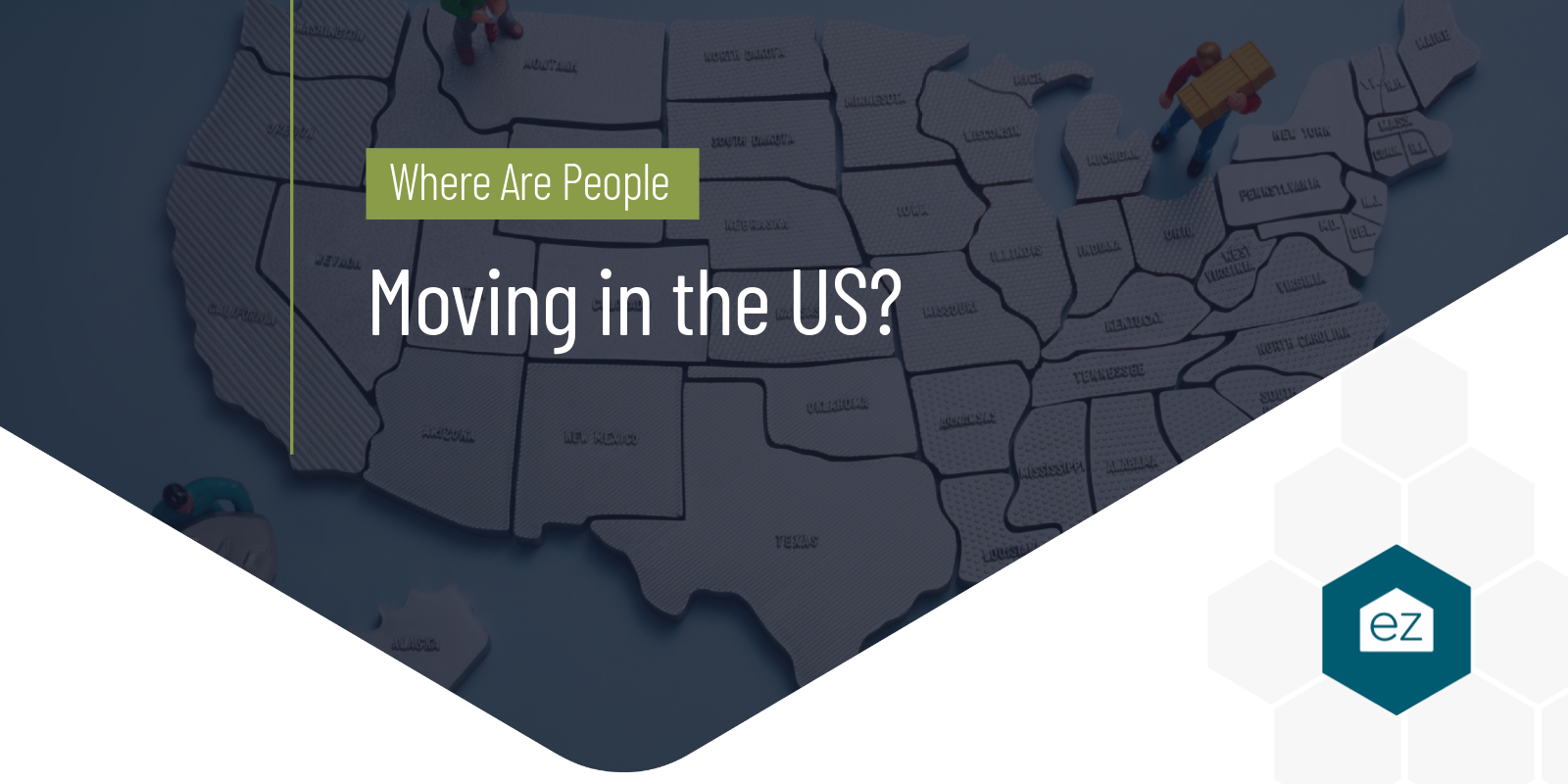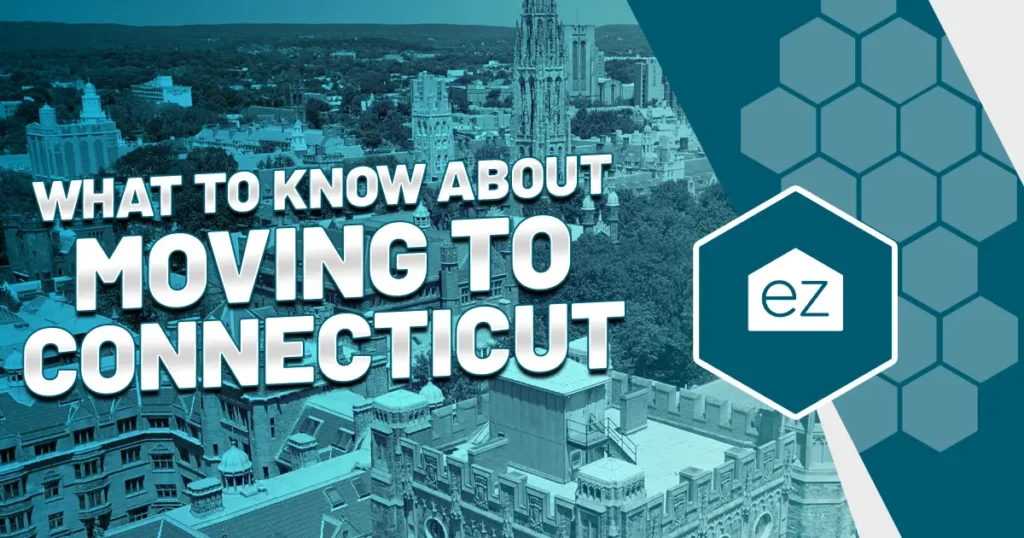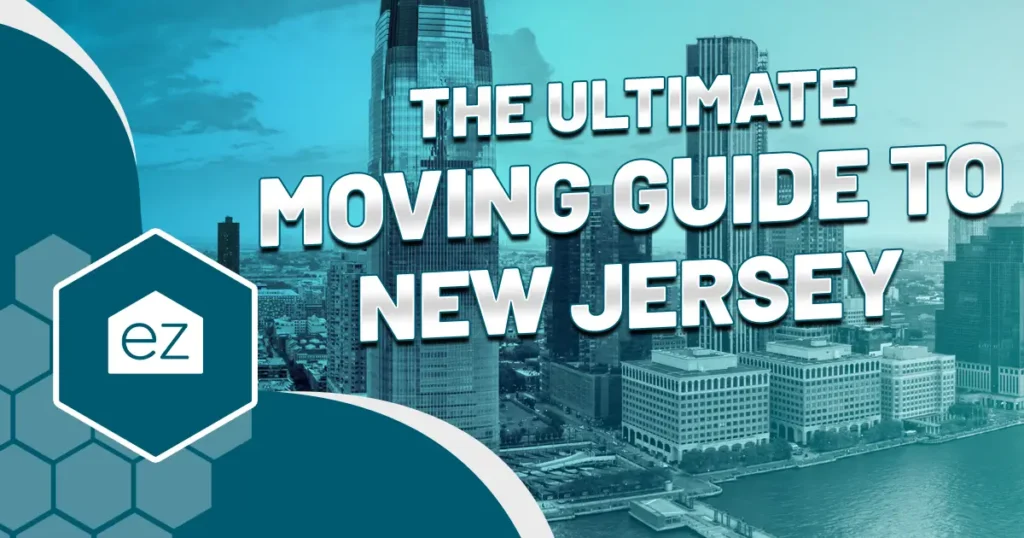Where Are People Moving in the US?

Where Are People Moving in the US?
There’s an old saying in business: if you’re not growing, you’re dying. The same may be true when it comes to where you live. Either you live in an expanding US community, or people are moving away and finding a growing community. Between 2021 and 2022, 9% of Americans moved locally or long distance.
Why does it matter? Because increased demand in an area can lead to higher home prices, while the opposite can dip them down. And, if people are moving to your city, that doesn’t just mean more people. Expanded economic opportunity benefits wages, public services, school systems, and the overall quality of life.
That’s why we examined the latest data to see where people were moving and where their dollars were going. If we want to get more specific about where people are moving—or not moving—it means diving more deeply into two categories:
- Net population growth (total population growth minus population loss)
- Specific cities
Fortunately, we found some US Census data that signals where the trends are moving.
States With The Most New Residents in 2022

The pandemic accelerated the migration trends toward the south and the west. The data released by the US Census Bureau shows that the top five states for growth from July 2021 to July 2022 are in these regions. Specifically, people were moving to:
Florida: This leading retirement destination attracts people from the northeast and Midwest with its no individual income tax, various real estate availability, and pro-retirement environment. Over 700,000 people have picked up and moved to Florida from April 2020 to July 2022. It topped all the states for growth rate, adding 1.9% new residents by migration.
Idaho: The 2021 fastest-growing state slipped a little bit, but it’s still on the heels of Florida with a 1.8% growth rate. Its affordability has been a critical factor in attracting 100,000 residents over the last two years. They primarily come from the northwestern states and California.
South Carolina: Affordability in real estate and overall cost of living was a big reason people started looking towards South Carolina. Plus, it has a lower population than nearby Florida, so it’s less crowded with some of the same great weather and amenities. It added 164,000 new residents during the pandemic.
Texas: A state as big as Texas has plenty of room to grow, which meant it had the largest number of new residents. Percentage-wise, it had a 1.6% growth rate. In particular, the areas around Dallas and Austin have reported phenomenal growth.
South Dakota: In a surprising twist, this north Midwestern state had a 1.5% growth rate. Still, even though it’s added quite a few new residents, its population remains under 1 million.
Fastest Growing US Cities by Population

It takes a while for Census data to observe population changes, so the data here tends to be a bit older. However, the US Census also accurately tabulates both inflow and outflow of populations, giving us some net results we can use to gauge population differences. Even snapshots, such as individual months (as the Census data below shows data from July 2021), can help paint a picture.
In a US Census visualization, you’ll see a few things:
- The fastest-growing cities are in the west and south. That was the summary of a US Census press release headline that summed up the data. In the list of cities with the most significant population change, all five were from the south or southwest. In particular, they came from two states alone—Texas and Arizona. The US Census noted: “Eight of the 15 fastest-growing large cities or towns by percent change were in the west, with five in Arizona and seven in the south.
- The same was true for both larger percentage changes and largest numeric changes. A town with 100 people can grow by 50% simply by adding 50 people. But that may not give you an accurate picture of how much growth occurs in a specific place. Fortunately, the Census data covered both percentage changes and total population growth. The data highlighted only cities with populations of 50,000 or more. Otherwise, the percentage growth might have been skewed.
Here’s how the data broke down.
Largest percentage of population growth:
- Georgetown, TX: 10.5%
- Leander, TX: 10.1%
- Queen Creek, AZ: 8.9%
- Buckeye, AZ: 8.6%
- New Braunfels, TX: 8.3%
Largest numeric population change:
- San Antonio, TX: 13,626
- Phoenix, AZ: 13,224
- Fort Worth, TX: 12,916
- Port St. Lucie, FL: 10,771
- North Las Vegas, NV: 9,917
Fastest Growing US Cities by Economic Output

Last October, the Kenan Institute of Private Enterprise released a list of the top 10 fastest-growing cities in the United States. Rather than look at raw population growth, they used 2022 GDP growth as their primary metric.
GDP refers to gross domestic product. This is a measure of the goods and services that an area contributes to the economy. Think of it as a bird’s-eye view of the total economic activity in an area. Sure, it can be difficult to measure where that money came from, but from a GDP point of view, what matters is that it’s there.
The results of gauging city growth by GDP found these metro areas to be growing the fastest when it comes to raw economic data:
- San Francisco Bay Area: 4.8%
- Austin, TX: 4.3%
- Seattle, WA: 3.5%
- Raleigh/Durham, NC: 3.4%
- Dallas, TX: 3.1%
- Denver, CO: 3.0%
- Salt Lake City, UT: 2.8%
- Charlotte, NC: 2.5%
- New Orleans, LA: 2.4%
- Orlando, FL: 2.4%
Keep in mind that the Kenan Institute looked at metropolitan areas rather than individual cities. Looking at GDP for local cities isn’t always possible. It is possible, however, to glean information from metropolitan areas to get an overall picture of the growing regions.
The problem with economic statistics is that if we’re gauging where people are moving in the US, they don’t reflect if migration helped that growth. Yes, there will be some correlation between population growth and economic growth as more people moving into an area means there’s generally going to be more economic activity, but that’s not always the case.
Conclusions About Where People Want to Live

There are some trends to watch if you follow the data. For starters, we see in various lists that the fastest-growing cities tend to be in southern or western locations like Arizona, Colorado, Idaho, Texas, and Florida. What do they all have in common? People are moving towards southern and western population centers.
Florida made the most net population gains in 2022, with about 319,000 new residents calling it home.
Four of the five previously mentioned states provide warmer or drier climates ideal for year-round recreation. Three are ranked favorably for their tax policies, signaling affordability may also play a factor. A strong job market is another possibility, as these states have strong and diverse economies.
Impact of New Residents
Don’t be surprised if the migration to these states and cities pushes home prices up in those communities as they grow and their economic footprint expands. That doesn’t mean you can’t take advantage of those same great deals. If living in one of these states sounds right for you, a local real estate agent can guide you to find a great next home.





